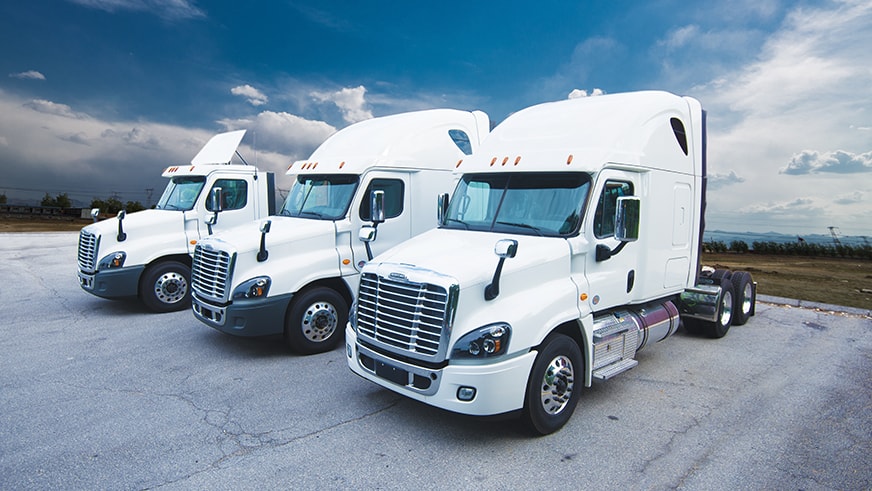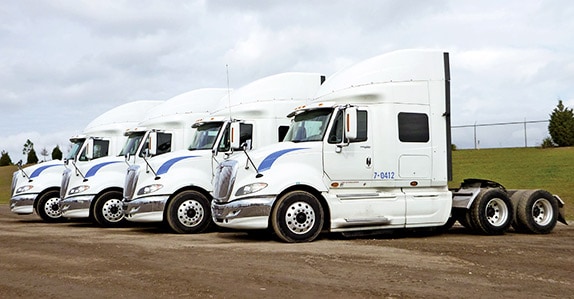According to the National Highway Traffic Safety Administration (NHTSA), 94% of all traffic accidents are the fault of drivers.
The driver is responsible for the actual operation of the fleet vehicles, and any accidents that occur due to their driving can impact the reputation of your fleeting company. Furthermore, improper driving may cause damage to fleet vehicles. Hence, you need to have well-trained drivers who abide by the rules.
As a Fleet Manager, you need to focus on handling operations, monitoring driver performance, and ensuring driver safety, which becomes more complex and difficult to manage with larger fleet sizes. You also need to train your fleet drivers after analyzing driver behavior and activity since road rage and distracted driving are the cause of most of the accidents. Thankfully, Automated systems can help you get an unbiased opinion of the driver’s behavior for all the vehicles in the fleet.

This blog focuses on the uses of automation to help in training drivers over time, which decreases your liabilities and risks while improving efficiency and saving costs.
The Need for Training
Road traffic accidents cause 1.2 million deaths annually, most of which can be solved with the right precautionary measures.
Although both technical tools and proper management plans are helpful, sometimes even the best vehicles can face accidents if the drivers lack the training to avoid them.
Training is a continuous process of improvement and upskilling of drivers in the fleet. Training that focuses on safety and complies with regulatory requirements will help you to decrease liability costs and promote good driving practices.
How Automated Systems Help Fleet Driver Training
Automated systems use many sensors, and interfaces to provide real-time tracking of vehicles, along with alerts and insights of driver activities. Automated systems make smart vehicles that can gather insights and create analytics of a driver profile.
1. Driver Behavior and Notifications
Automated fleet management systems can help drivers realize their negative driving behavior through notifications and alerts. Once they identify the unintentional mistakes, they can correct them and perfect their driving skills. Over time, these notifications can help drivers cultivate positive driving habits.
Additionally, these notifications will also be conveyed to you, and you can either reprimand them or ask them to undergo training for defensive driving. Moreover, they will also get notifications for an open door or thermoregulation of food products if their temperature starts to rise or fall.
Fort Point Beer uses temperature monitoring to keep its beverages in optimal temperature and earn positive customer reviews.
2. Costs and Maintenance
Driver behavior can also cause downtime, loss of money, and a lot of accidents along the way. Reckless driving and road rage promote accidents, whereas idling vehicles can cause fuel loss without any movement.
Using remote monitoring and control, you can look at alternate routes to decrease the costs and idle time of the vehicles. You can also mitigate problems by using a different vehicle to transfer goods in transit from a vehicle that has suffered a breakdown.
Sensors can track down specific items and predict a date for preventive maintenance. However, accidents can happen at any time. While fixing a complete breakdown is the job of a maintenance engineer, every driver must have a basic idea about the maintenance of the vehicle so that there is no need to call another person to solve trifles.
Massachusetts Bay Transport Agency uses GPS monitoring with fault codes so that there is no time lost in searching for vehicle and maintenance areas.
3. Dash cams
Dash cams are very important in vehicles since they can give you proper insights about the driver, the vehicle, and surrounding areas. The dashboard camera monitors real-time driving experience and warns the driver about reckless driving. It also alerts the driver about the different types of signs and accident-prone situations.
An AI-controlled dash cam continuously monitors and automatically detects distracted driving, which is the reason for many accidents on the road. The driver will receive alerts to save him/her from problems.
Furthermore, the dashcam comes in handy to protect from a vehicle or other asset theft and can serve as video proof of your innocence in case of framed accident cases. With real-time tracking of vehicles along with the dash cam, you can locate lost vehicles.
Dashcams in Stokes Trucking has helped protect the company from false claims.
4. ELD Compliance
According to the new mandate, the Hours of Service (HOS) must be registered by an FMCSA approved Electronic Logging Device (ELD). To prevent HOS violations, you need a device that can show you the shifts of drivers in real-time, along with the time for the next break, as well as notify the drivers about their break times with alert notifications so that they don’t have to constantly look at the timer. The real-time tracking of shifts and GPS will help you to prepare a route map for the drivers and also avoid HOS violations.
It also helps in easy ELD compliance since the drivers can use the HOS data to help in creating logs, thus staying ready for DOT inspection at all times. You can use the log data to measure the performance of drivers along with the areas where they need training from these logs.
Wash-Ca Distributing has achieved ELD compliance for 175 tractors, and 200 trailers using Samsara.
5. Training and Coaching
Drivers are the lifeline of the fleeting industry, and it is essential to guide them during driving by implementing driver safety initiatives with a solution for problems. Safety initiatives like training programs can save people from life and death situations by taking prompt action.
Coaching and training are ongoing processes that must be undertaken at intervals.
During training or coaching interventions, it is necessary to build an interest in the drivers for the program. You can try adding a few gifts or incentives for the program. Using the data from various sensors and logs, you can create a list of the items that need maintenance, choose the drivers for coaching, and track progress over time.
Other than providing safety tips, drivers must also be taught about the fleet management software so that they can use it effectively to ask for assistance or report a problem.
Simco Logistics implemented a video-based safety program for over 150 drivers and found a 50% decrease in the number of accidents.
Conclusion
Automated systems provide a lot of data about driver experience and behavior. From ELD to Dashcam, every single automation improves the safety and quality of life of the driver. By collating and analyzing AI-driven data, you can create a training program that suits them.


